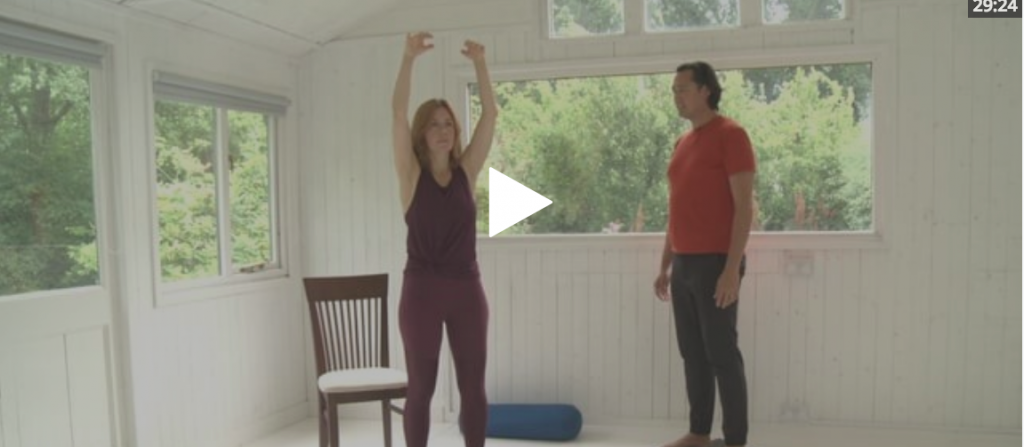“Qi” is the Chinese word for energy or life force. “Gong” means work, or cultivation. Therefore Qigong simply means cultivating energy.

It is an incredibly broad term and rightly so, because the aim of the practice is to bring overall health to the practitioner. Qigong doesn’t claim ownership over specific exercises or forms. As a practice, there are thousands of different types of movements and forms which have been labelled Qigong. This may seem strange, but the reason is simple: different things work for different people. Therefore, there are many exercises which count as qigong because many different people have received benefits from persistent practice.
Qigong is fundamentally empirical: movements and forms in Qigong exercises have been noted to be effective through repeated practice, observation, and mindful awareness over 3000 years (or more.)
Qigong is a tradition usually passed down through verbal physical instruction.
Historically, Qigong students learn through a teacher in their local area, or by seeking a teacher they resonate with and asking the teacher if they would be willing to teach them. There isn’t a clear reason why, but I imagine it is largely because relationships are key to an effective Qigong practice. Let me explain.
Qi is everywhere. It is in everything.
There is qi in a thought. There is qi in a smile. There is qi in an inhale. There is qi in a table and the chairs surrounding it. There is qi in soil, water, sunshine. There is qi in a rice grain and qi in the fire which cooks it. Naturally, there is qi in the food we eat. Qi is in everything and everywhere, in physical form and in formlessness. There is also qi in the conversations we have, the things we read, the music we listen to. There is qi in a hug, there is qi in a memory. So, as energy is in everything, how we use or cultivate the energy around and within us is what makes Qigong a useful activity. We do this by channelling our intention clearly. What does this mean? Answer this: why are you wanting to practice Qigong? Is it to heal an injury? Is it to release stress? Is it to regain strength after convalescence? Is it to move on from a bad breakup?

What does this have to do with a physical activity like Qigong? A passage from the Tao Te Ching explains this best:
“We join spokes together in a wheel,
but it is the center hole
that makes the wagon move.
We shape clay into a pot,
but it is the emptiness inside
that holds whatever we want.
We hammer wood for a house,
but it is the inner space
that makes it livable.
We work with being,
but non-being is what we use.”
Tao Te Ching chapter 11, translated by Stephen Mitchell
We all want to be well. By being well, we can have healthier lives, easier relationships, and hopefully, live with less pain.
Physical activity like Qigong is useful if being well means we are able to live our lives more fully. For me, it means being able to smile and laugh more easily with my family and friends. This is why I practice Qigong and why I passionately teach it. Imagine that your intentions are the banks of a river, and the qi is the water flowing in the river. The landscape of the river banks shape the flow of the water.
There are a few fundamental hypotheses in Chinese medicine: one is that all things being equal, the body will heal itself.
Another is that there is a natural rhythm and movement to all energy. Living life in 2017 means we are constantly in deficit with our health, taxing our bodies, and rarely following natural rhythms for resting, eating or working. So, this is where the “gong” or the work comes in. The physical exercises generate movement to release energy that is dormant or stagnant within us. Recall the image of that river. Our busy lives mean we create blockages or divergences which deplete the natural flow. We multitask and spread ourselves thin. We regularly test our endurance levels and push boundaries. I am not labelling anything as “good” or “bad”, but extended periods of stress and deficit will lead to weaknesses and blockages in the system, which will lead to illness. So, Qigong exercises are ways to promote regular rhythm and flow for our energy. It simply keeps things moving.
As I said earlier, Qigong comes in many forms. It is whatever promotes and sustains free-flowing energy with you.
These exercises are one way to unlock these energy flows. For you, it may be swimming, running, making bread, riding a horse, dancing, climbing a mountain, or biking from coast to coast. What is key is the coupling or the intention and physical movement which makes Qigong powerful. I also greatly value the accessibility of Qigong. Anyone can do it. Anywhere. Standing or sitting. You can do it for 5 minutes or 45 minutes. They key thing is to marry your intention and movement.
curious to learn more about Qigong? Read this blog on Qigong for Beginners






Leave a Reply